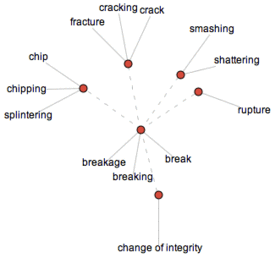On November and Breaking and Holding that which is Breaking in the Light
I was raised a Catholic but for the past ten years or so, since joining a Friends meeting, I have considered myself a Quaker. One of the things I like about the Quakers is their potential for inclusiveness. Another thing I like is their use of language—the turn of certain phrases. And one of my favorite Quaker phrases is this one: holding something or someone in the light. This phrase took on a personal significance for me one November, six years ago now. During that November I’d been seeing a patient, A., a man in his fifties, a member of our Quaker meeting, who had previously been entirely well and then had discovered that he had metastatic colon cancer. I’d worked with A. a little over a year, and during that year, while receiving treatment for his cancer, he’d done a great deal of work with healing imagery, including imagery with light. Perhaps, because his imagery was illuminating in and of itself, and because I have received his permission to do so, I will write some about his imagery here later. But for now, what I want to say is that six years ago now, in November, his wife, S., had decided to gather a small group in their home for a Quaker meeting—a meeting whose purpose was, in the language of Quakers, to hold A. in the light. I’d been invited to come to the meeting, but had been unable to attend because I was flying back to Missouri that week to visit my mother who was suffering (and who, unfortunately, continues to suffer) with a rather severe mental illness. That trip to Missouri was, for me, a difficult one. But this is what I remember—and why I am writing about this now: Before leaving southwest Missouri in my rental car to drive back up to Kansas City to catch a plane home, I checked my messages at work and found a message from S.—A’s wife. She reminded me that the meeting in her home would be that day, and she told me what time it would be—at eleven I think. And she told me, at the end of the message, that they would hold me in the light. I am not a person who talks frequently or easily about religion, or of spiritual matters for that matter. I was raised Catholic, but, the way I remember it, most of the language for things of the spirit stayed inside the church; it resided in the liturgy and in formal prayers. I’m the kind of person who tends often to think that spiritual matters are so large—or so something—it is difficult to find language for them. But that morning—driving back to Kansas city—one of those lit-up November days and the landscape is very flat there and the sky is very large—on that morning I felt the beauty of the Quaker language—of S’s language—and the comfort of it—to be driving away from a difficult time—a difficult place—and while I was driving to carry the sense—that knowing—that for this one drive—this hour—I was being held in the light. When I think about what’s possible with writing—and, in particular, writing that has to do with breaking—or with grief—this is one of the images I hold for writing: that writing is a way...
read more
